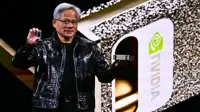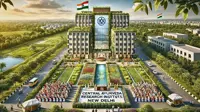US bodies moot green energy code for new buildings
13 Jun 2009
New Buildings Institute (NBI) and the American Institute of Architects (AIA) are proposing comprehensive changes to a national model energy code for new commercial buildings, the International Energy Conservation Code (IECC), which would create buildings that are 20-25 per cent more energy efficient than what today's average standards require.
while the NBI is a nonprofit organisation working to improve the energy performance of commercial buildings, the AIA is a membership organisation and voice of the architecture profession.
The groups submitted their proposal to the International Code Council (ICC) June 1 for consideration in the current code development process. The ICC creates energy codes that are part of overall model codes for buildings every three years with the next update to be released in 2012.
The proposed high efficiency energy code is modeled on NBI's Core Performance protocol, a direct and prescriptive approach to achieving energy savings in commercial buildings. Building codes based on Core Performance have already been adopted by the state of Massachusetts and are under consideration by other states and municipalities.
''In co-authoring this proposal, it was our intention to make sure that the new energy codes would be stringent enough to advance our stated goal of achieving carbon neutrality in buildings by 2030,'' said Christine McEntee, EVP/CEO AIA.
''We feel it is important for the private sector to take a leadership position on this important issue that relates to the built environment."
Buildings, which consume about two-third of the US power supply, account for 40 per cent of carbon dioxide (CO2) emissions in the United States.
''We're already seeing market shifts toward more energy-efficient, high performance buildings among the design community and forward-thinking owners,'' said Dave Hewitt, NBI executive director.
''These market leaders are benefiting from lower energy costs and higher-value buildings,'' he said.
Hewitt also noted that a variety of commercial buildings have surpassed the proposed high efficiency energy code, and that these buildings have been built in many different climates and under different circumstances.
The high efficiency energy code proposal contains specific measures and strategies that allow designers and builders to use widely available equipment and products.
These include:
Building Envelope: The proposal incorporates insulation standards that have been used in utility programs or adopted into recent national model codes. The windows and doors are specified to provide good insulation value while also keeping out excess heat that increases air conditioning costs
Heating / Cooling: The proposal provides for improved design of air distribution systems and increased efficiency levels in heating and cooling equipment
Lighting Energy: consumption is reduced by using a sensible approach to placing high-efficiency lighting fixtures, ballasts, and bulbs in work and public areas in offices, schools, retail, and other types of commercial buildings. Lighting controls, such as occupancy and daylight sensors, also reduce wasted energy. The proposal ensures that quality lighting is delivered with minimum energy use and cost in all types of commercial buildings
Quality Assurance: In order to assure that buildings save energy as they were designed to, the proposal specifies testing or commissioning processes for key building energy systems
Renewable Power: The proposal offers options for using renewable power to meet part of the energy savings objective
''These high performance building strategies are completely within the realm of what's doable today,'' said Hewitt.
''The new code is needed to help motivate commercial building professionals to apply them to the next project.''



.webp)





























